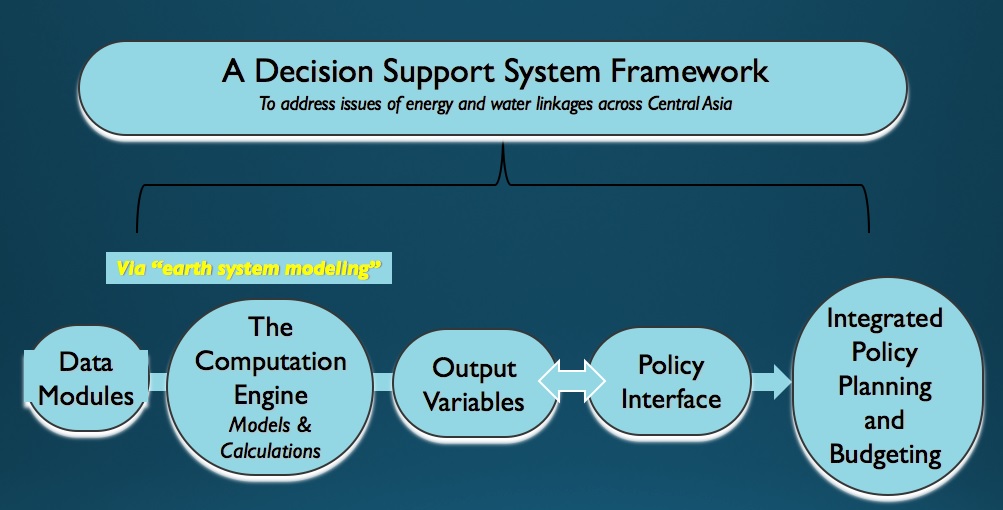Project Lead: Amanda Tan, Department of Oceanography, University of Washington
eScience Liaisons: Rob Fatland, Anthony Arendt
A dynamic information framework (DIF) is a decision support structure centered on earth system science models and data resources used to address policy challenges in water resources caused by population growth, socio-economic development and climate change, particularly in developing nations. This decision support tool is particularly useful in developing nations because such a framework encourages open data sources, transparency and also, by putting such a framework in the cloud, it eliminates the need for standalone infrastructure.
The AralDIF project aims to inform policy challenges in water resources in the Aral Sea Basin; bridging the information gap between decision makers and scientists. The goal of this project is to better inform policy challenges in the area by providing a scalable and flexible framework for data storage and tools for data visualization and analysis.
The AralDIF tool integrates hydrologic model and climate data, correlating and sub-setting the large global datasets to the region of interest using the Python development environment (using Pandas and Xarray modules). The cropped datasets are currently stored using Azure Blob, although other cloud based services are also being considered. The data is served through an API developed using the Django Python Web framework, allowing the user to download data for certain locations within the basin during specific timeframes. Currently the user has the choice to download the data as either comma-separated text files, raw json output or hydrographs. These tools allow the user to navigate and interpret the large datasets to answer specific questions that can inform policy decisions.
The next steps of the project are to tie the hydrologic data to geospatial information using web based data visualization tools such as the Bing Maps platform, harness existing online datasets (e.g. CUAHSI HIS) and provide a demonstration model Client in the browser.

